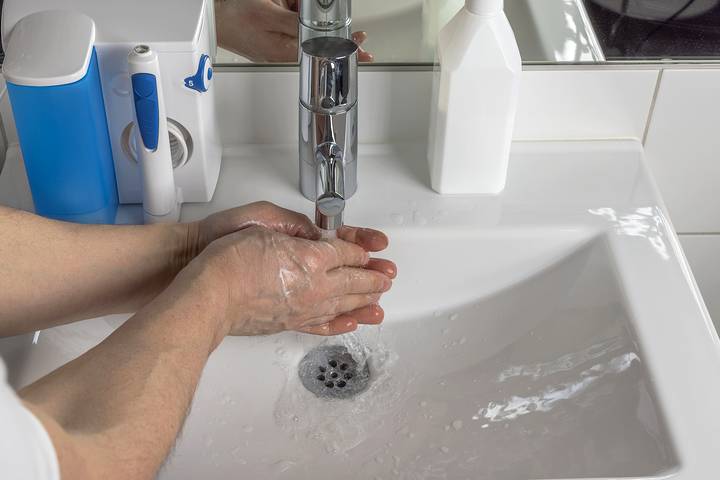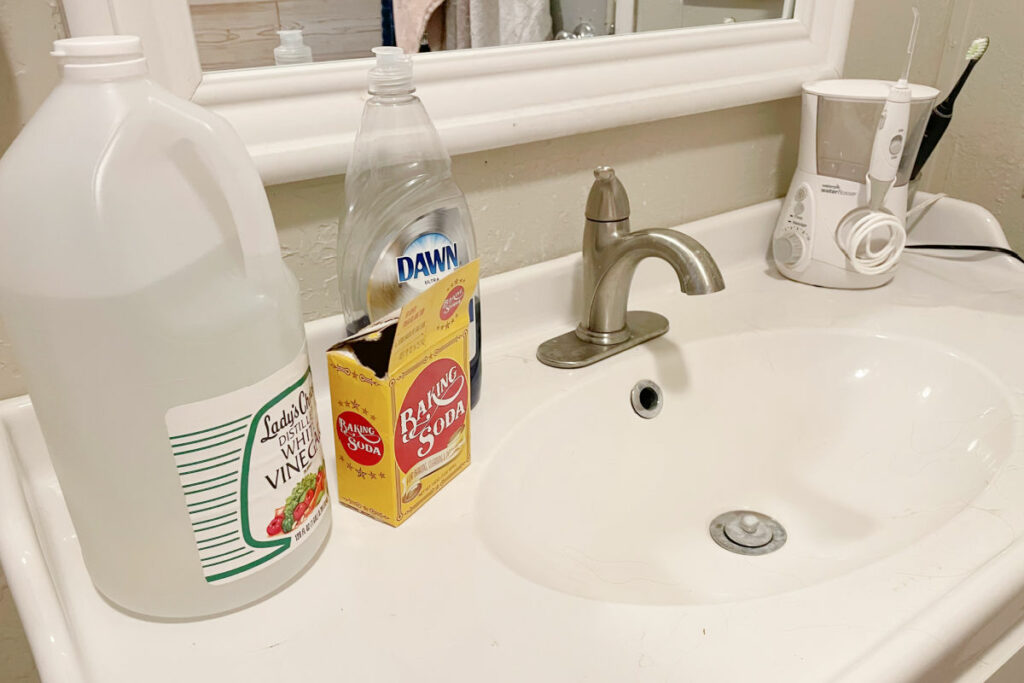When it comes to bathroom renovations, it's easy to get caught up in the aesthetics and forget about the practical aspects. But one important factor that should not be overlooked is proper bathroom sink venting. Venting your bathroom sink is crucial for maintaining good air flow and preventing harmful gases from building up. In this article, we'll discuss everything you need to know about bathroom sink venting, including how to do it, common problems and solutions, and the benefits of proper venting.Bathroom Sink Venting: What You Need to Know
Venting a bathroom sink may seem like a daunting task, but it's actually quite simple. The most common method is to install an air admittance valve (AAV) under the sink. This valve allows air to enter the drain line, preventing negative pressure from forming and allowing wastewater to flow freely. Another option is to connect the sink drain to the main vent stack, which runs vertically through the roof. This method is more complex and may require the help of a professional plumber.How to Vent a Bathroom Sink
There are several different options when it comes to venting your bathroom sink. As mentioned earlier, an air admittance valve is the most common and easiest method. However, if your sink is located far from a main vent stack, you may need to install a separate vent pipe that connects to the main stack. Alternatively, you can also use an external vent, which is a vent pipe that runs through an exterior wall and connects to the main vent stack.Bathroom Sink Venting Options
Proper bathroom sink venting is crucial for several reasons. Firstly, it prevents negative pressure from forming in the drain line, which can cause slow draining and gurgling noises. It also allows air to circulate in the drain line, preventing harmful gases from building up. In addition, proper venting helps to maintain good air flow in your plumbing system, which can prevent clogs and other issues.The Importance of Proper Bathroom Sink Venting
There are a few signs that can indicate if your bathroom sink is not properly vented. If you notice gurgling noises when you use the sink, or if water drains slowly, it could be a sign that negative pressure is building up in the drain line. Another indicator is foul odors coming from the sink, which may be caused by gases not being able to escape. If you experience any of these issues, it's important to check the venting and make any necessary adjustments.How to Tell if Your Bathroom Sink is Properly Vented
Despite the importance of proper venting, there are some common problems that can occur with bathroom sink venting. One issue is a clogged vent pipe, which can happen if debris or insects get trapped inside. This can be solved by clearing the vent pipe or installing a vent cap. Another problem is a damaged vent pipe, which can occur due to age, extreme weather, or poor installation. In this case, the damaged section of the pipe will need to be replaced.Common Bathroom Sink Venting Problems and Solutions
While it's always recommended to hire a professional plumber to handle any plumbing work, some homeowners may want to attempt DIY bathroom sink venting. If you choose to do so, here are a few tips to keep in mind. Firstly, always check your local building codes to ensure you are following proper regulations. Secondly, make sure you have the necessary tools and equipment before starting the project. And lastly, if you encounter any problems or are unsure about anything, don't hesitate to seek professional help.DIY Bathroom Sink Venting: Tips and Tricks
Proper bathroom sink venting offers several benefits, including improved air flow, prevention of harmful gases, and prevention of clogs. It can also help to maintain the overall health and functionality of your plumbing system, saving you from potential costly repairs down the line. In addition, having a properly vented bathroom sink can also add value to your home, making it a worthwhile investment.The Benefits of Proper Bathroom Sink Venting
If you're looking to revent your bathroom sink, it's important to first determine the cause of the issue. Whether you need to add an air admittance valve or connect the sink drain to a main vent stack, it's best to consult with a professional plumber to ensure the proper steps are taken. Attempting to revent a bathroom sink on your own without proper knowledge and experience can lead to more problems in the long run.How to Revent a Bathroom Sink
The cost of reventing a bathroom sink will vary depending on the specific method needed and the complexity of the plumbing system. Installing an air admittance valve may cost around $50-$100, while connecting the sink drain to a main vent stack can range from $200-$500. It's best to get quotes from multiple plumbers and compare prices to ensure you are getting a fair deal.The Cost of Reventing a Bathroom Sink
Why Proper Ventilation is Important for Your Bathroom Sink

The Importance of Proper Ventilation in Your Bathroom
 When it comes to designing or renovating your house, the bathroom may not always be the first thing that comes to mind. However, it is a vital part of any home and should not be overlooked. One important aspect of bathroom design that often gets overlooked is ventilation. Many people may question whether or not they need to install a vent for their bathroom sink. The short answer is yes, proper ventilation is crucial for your bathroom sink and here's why.
When it comes to designing or renovating your house, the bathroom may not always be the first thing that comes to mind. However, it is a vital part of any home and should not be overlooked. One important aspect of bathroom design that often gets overlooked is ventilation. Many people may question whether or not they need to install a vent for their bathroom sink. The short answer is yes, proper ventilation is crucial for your bathroom sink and here's why.
Preventing Mold and Mildew Growth
 One of the main reasons why you need to have proper ventilation for your bathroom sink is to prevent the growth of mold and mildew. Bathrooms are constantly exposed to moisture from showers, baths, and sinks. Without proper ventilation, this moisture can build up and create the perfect breeding ground for mold and mildew. These not only create an unpleasant odor but can also be harmful to your health. In addition, they can cause damage to your walls, floors, and other surfaces in the bathroom. A properly installed vent will help remove excess moisture from the air and prevent the growth of mold and mildew.
One of the main reasons why you need to have proper ventilation for your bathroom sink is to prevent the growth of mold and mildew. Bathrooms are constantly exposed to moisture from showers, baths, and sinks. Without proper ventilation, this moisture can build up and create the perfect breeding ground for mold and mildew. These not only create an unpleasant odor but can also be harmful to your health. In addition, they can cause damage to your walls, floors, and other surfaces in the bathroom. A properly installed vent will help remove excess moisture from the air and prevent the growth of mold and mildew.
Improved Air Quality
 Another important reason for having proper ventilation for your bathroom sink is to improve the air quality in your bathroom. Without proper ventilation, the air in your bathroom can become stale and musty. This is not only unpleasant but can also be harmful to your health. A vent will help remove odors, humidity, and other pollutants from the air, leaving your bathroom fresh and clean.
Another important reason for having proper ventilation for your bathroom sink is to improve the air quality in your bathroom. Without proper ventilation, the air in your bathroom can become stale and musty. This is not only unpleasant but can also be harmful to your health. A vent will help remove odors, humidity, and other pollutants from the air, leaving your bathroom fresh and clean.
Preventing Damage to Your Bathroom
 In addition to preventing mold and improving air quality, proper ventilation for your bathroom sink can also help prevent damage to your bathroom. The excess moisture in the air can cause damage to your walls, paint, and even your sink itself. Over time, this can lead to costly repairs and renovations. A vent will help remove this excess moisture and protect your bathroom from damage.
In addition to preventing mold and improving air quality, proper ventilation for your bathroom sink can also help prevent damage to your bathroom. The excess moisture in the air can cause damage to your walls, paint, and even your sink itself. Over time, this can lead to costly repairs and renovations. A vent will help remove this excess moisture and protect your bathroom from damage.
Complying with Building Codes
 Lastly, having proper ventilation for your bathroom sink is often required by building codes. These codes are put in place to ensure the safety and health of homeowners. By not having a vent for your bathroom sink, you may be in violation of these codes, which can result in fines or complications when selling your home.
Lastly, having proper ventilation for your bathroom sink is often required by building codes. These codes are put in place to ensure the safety and health of homeowners. By not having a vent for your bathroom sink, you may be in violation of these codes, which can result in fines or complications when selling your home.
Conclusion
 In conclusion, proper ventilation is crucial for your bathroom sink for a variety of reasons. It helps prevent the growth of mold and mildew, improves air quality, protects your bathroom from damage, and ensures compliance with building codes. So, if you are considering designing or renovating your bathroom, be sure to include proper ventilation for your sink in your plans. Your bathroom and your health will thank you.
In conclusion, proper ventilation is crucial for your bathroom sink for a variety of reasons. It helps prevent the growth of mold and mildew, improves air quality, protects your bathroom from damage, and ensures compliance with building codes. So, if you are considering designing or renovating your bathroom, be sure to include proper ventilation for your sink in your plans. Your bathroom and your health will thank you.
:max_bytes(150000):strip_icc()/venting-sink-diagram-f8f9759a-1047c08369d24101b00c8340ba048950.jpg)























































































